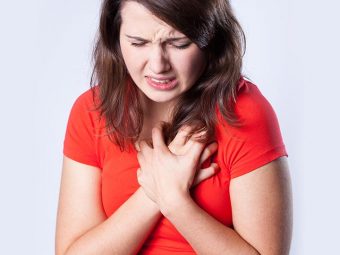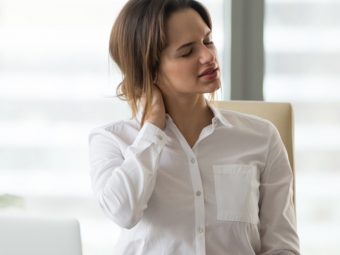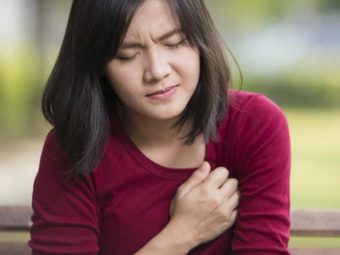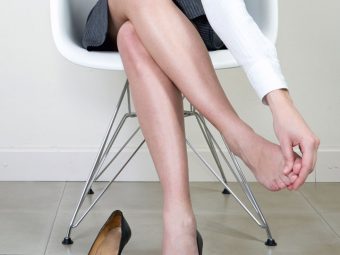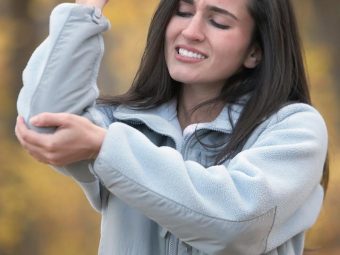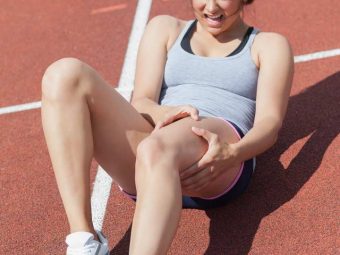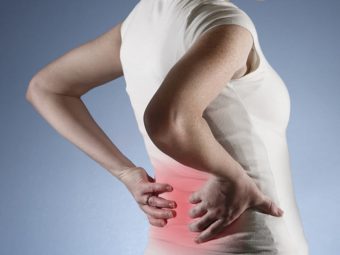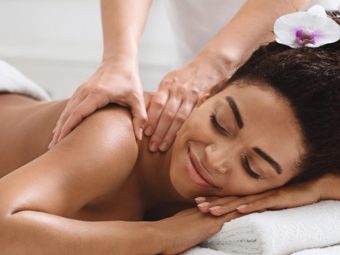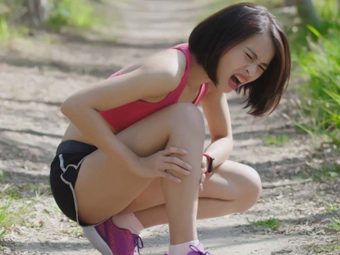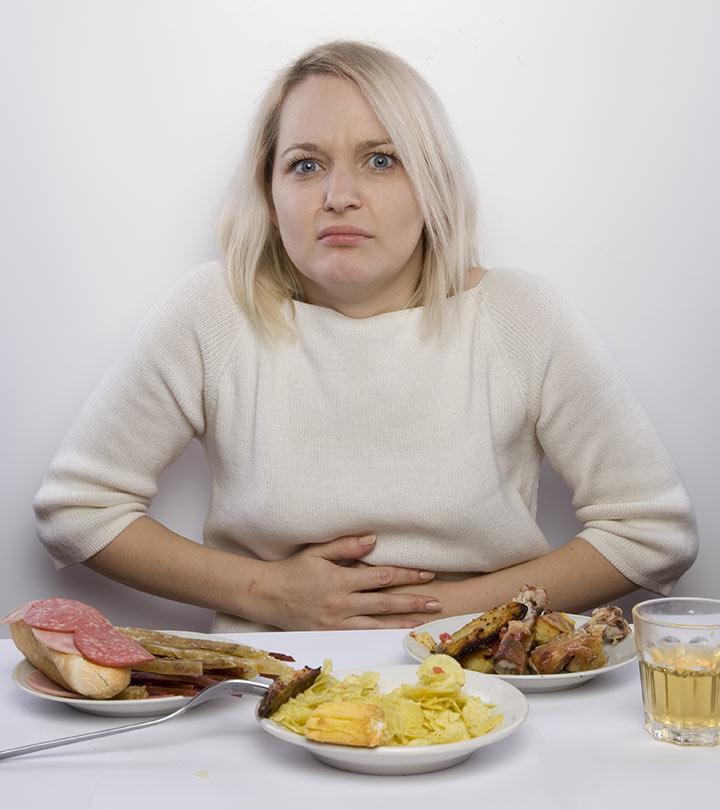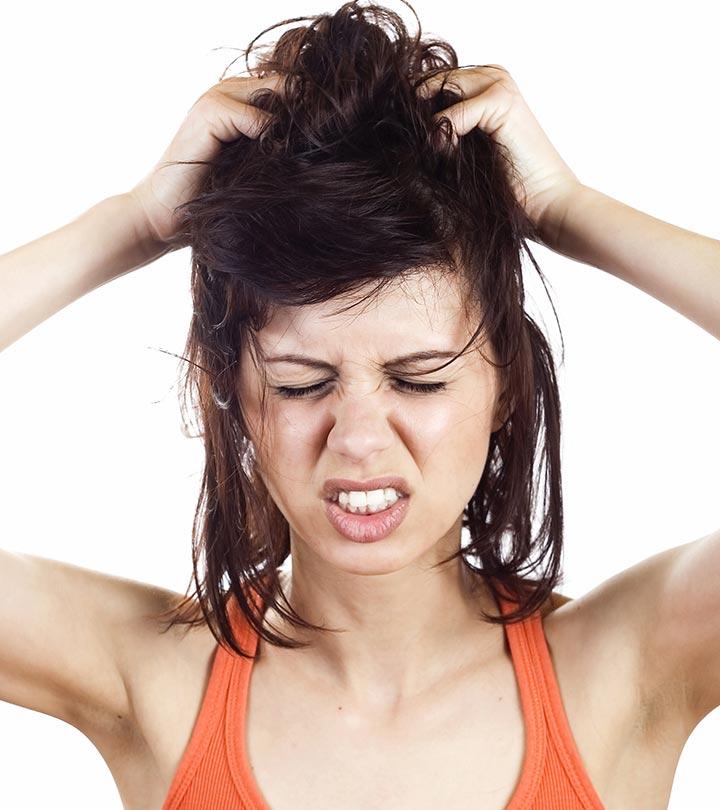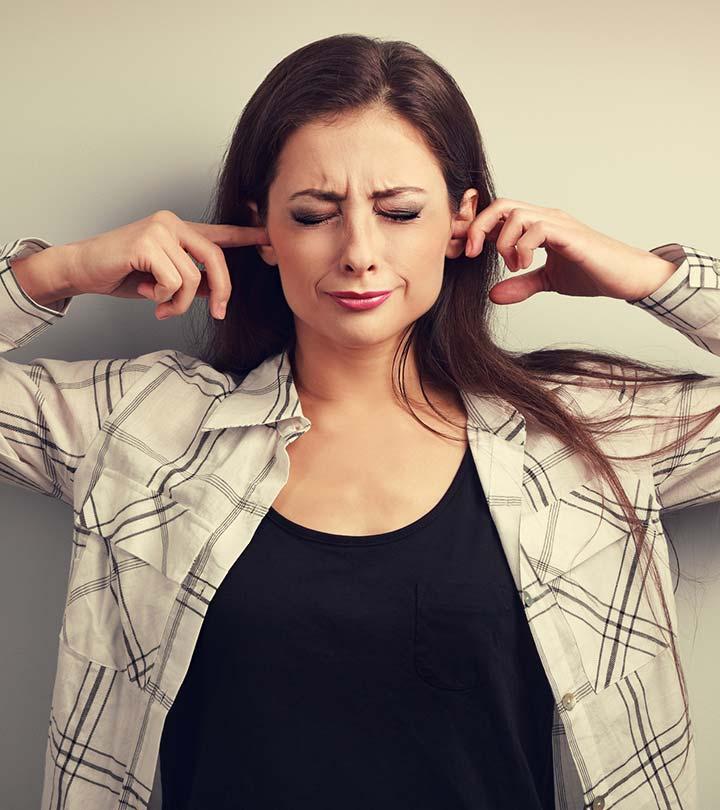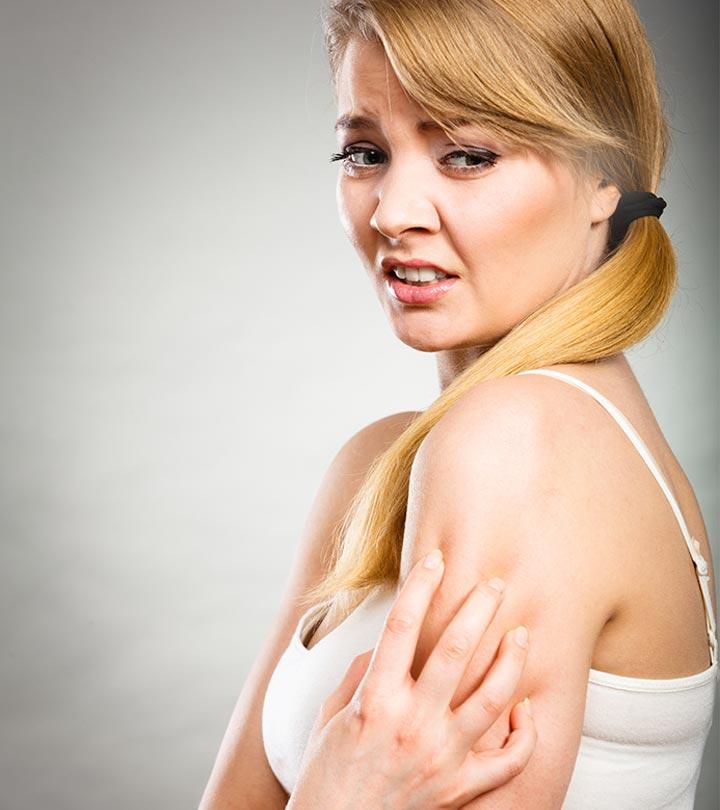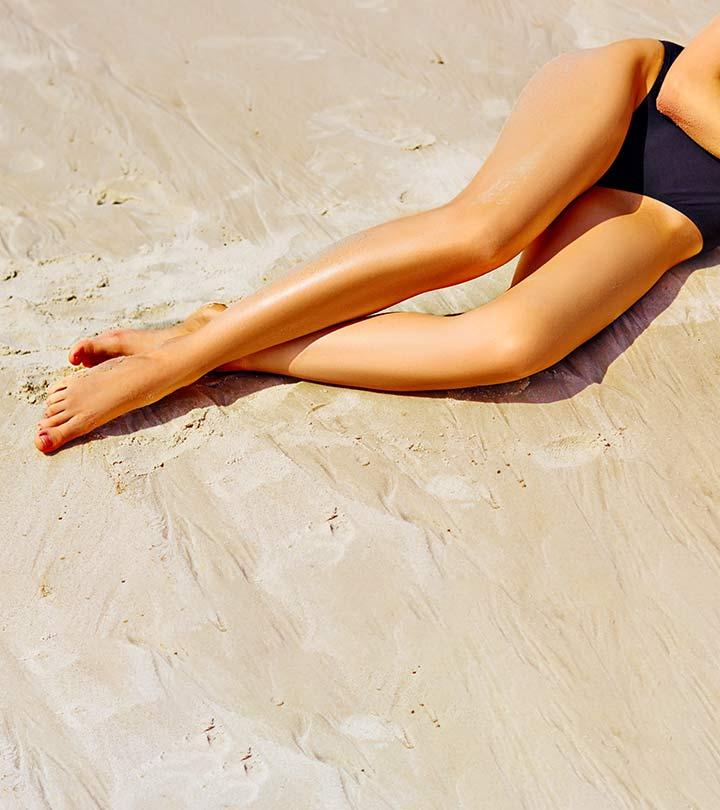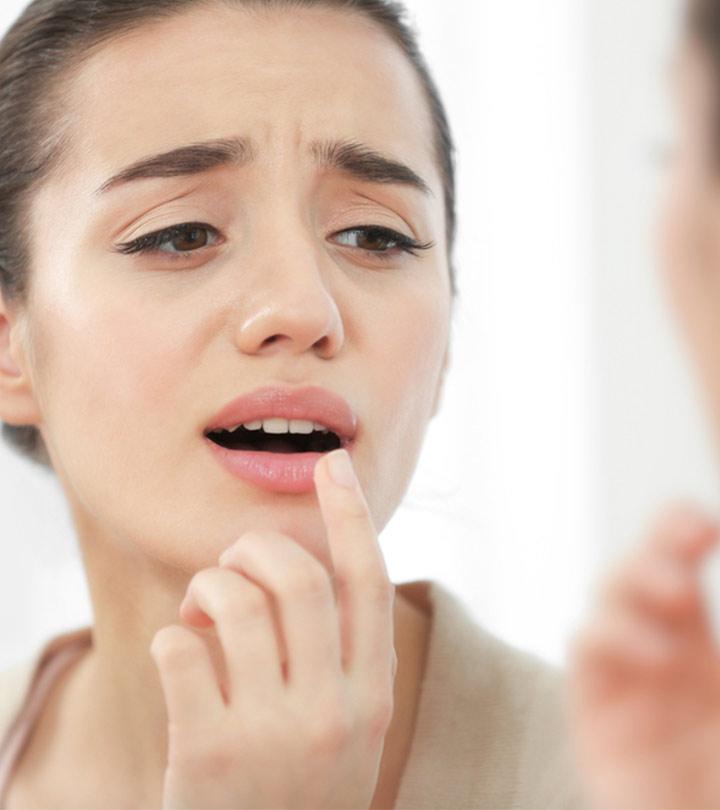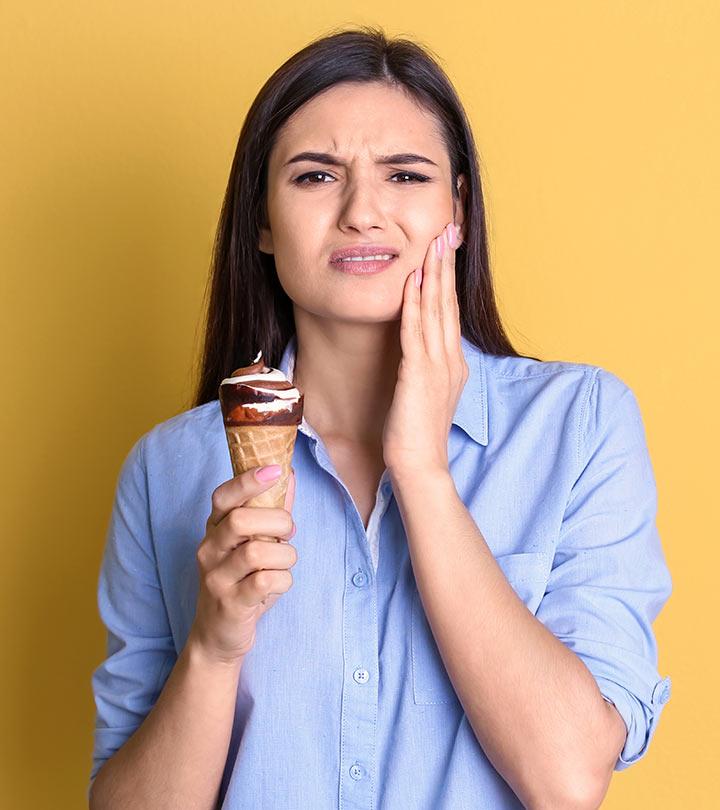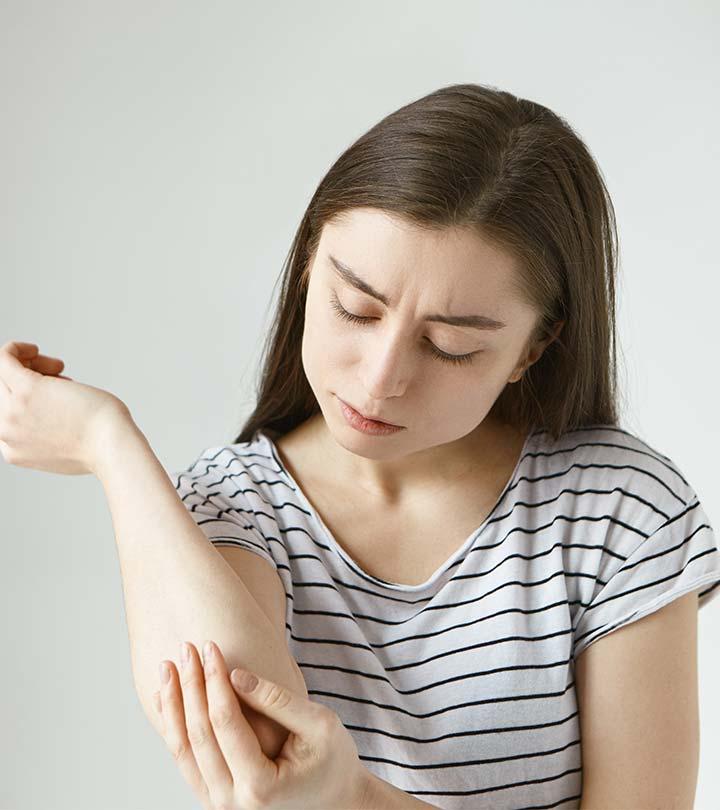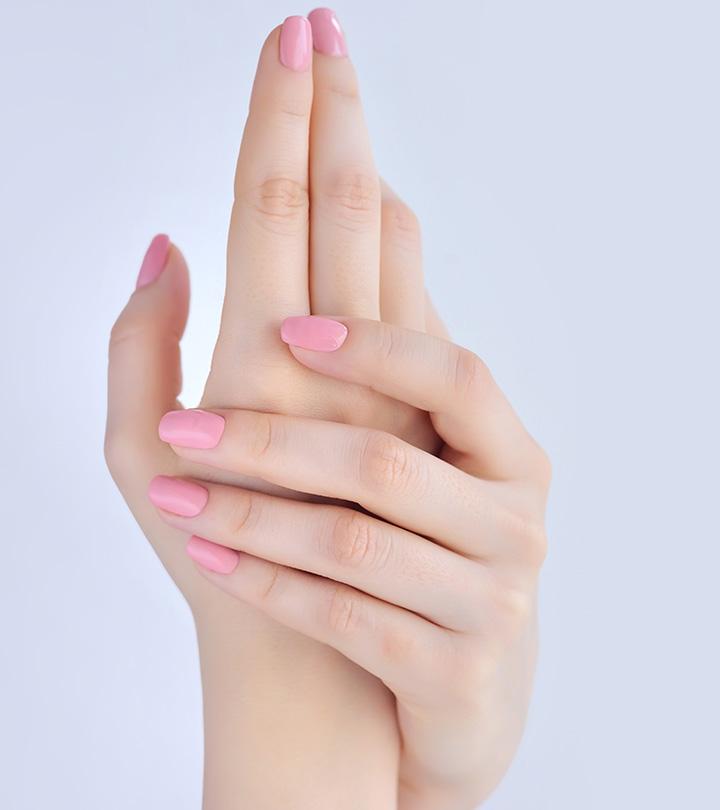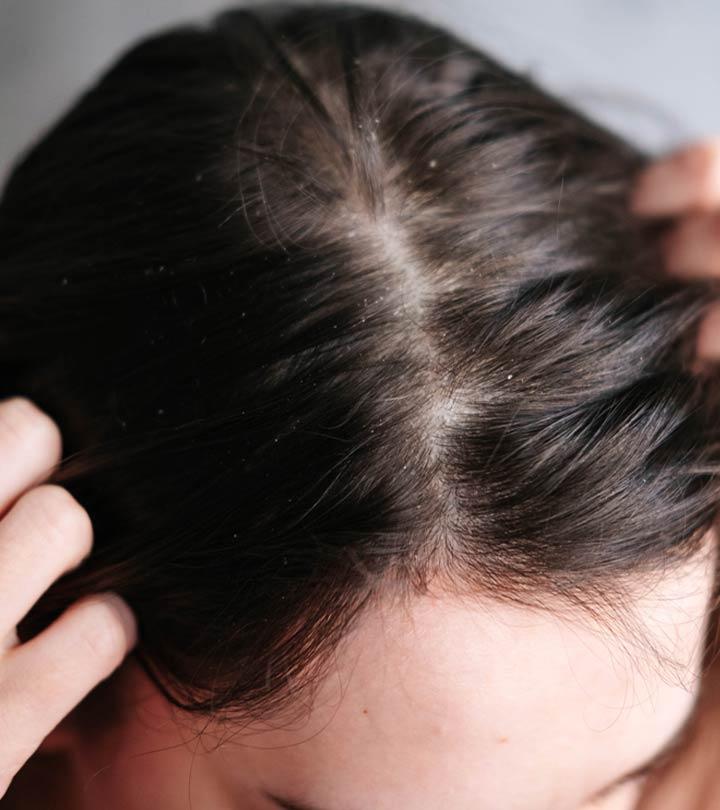How To Get Rid Of Sore Muscles From Exercise: Quick Relief Tips
DOMS can be annoying but not debilitating if you utilize some effective strategies on time.
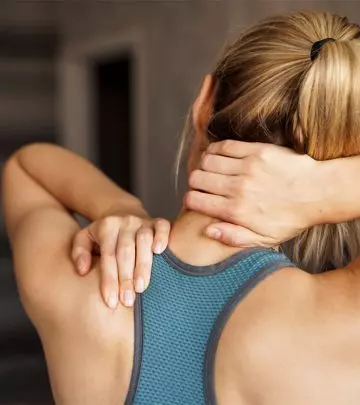
Image: Shutterstock
An intense workout may keep you energized and leave your muscles sore. The good news is, you can easily get rid of sore muscles and relieve the pain and stiffness with the strategies discussed in the article. The discomfort of sore muscles can be intense if you have hit the gym for the first time. It can be a huge challenge to just get out of bed and walk down the stairs. Keep reading to learn how to get rid of sore muscles and tips to keep you from getting sore after exercising.
In This Article
Possible Causes Of Muscle Soreness
Experiencing sore muscles after a tough workout, a round of intense sports, a new exercise, or a sudden day at the gym (after skipping a week or two), is your body going through DOMS. DOMS stands for delayed-onset muscle soreness, which usually occurs between 24 and 48 hours and peaks around 72 hours after you have got your muscles all worked up. Researchers think that a combination of two or more of the following factors may be responsible for the achy muscles (1):
- lactic acid buildup
- muscle spasm
- connective tissue damage
- muscle damage
- inflammation
- enzyme efflux
Eccentric movement, which involves a simultaneous contracting and lengthening of muscles, is closely associated with DOMS. Examples of exercises with a high eccentric load include squats, resistance training, weight lifting, sprinting, and plyometrics (2).
Does that mean that everyone who exercises gets sore muscles? Let’s find out.
Who Might Get Muscle Pain?
DOMS can affect anyone, regardless of whether that person is a novice, a seasoned athlete, or someone who is getting back to an exercise regime. Yes, even elite athletes and bodybuilders get post-workout muscle soreness. You may be affected by DOMS if (1):
- You cranked up your workout intensity.
- You added a new exercise that you haven’t done before.
- You did exercises with a high eccentric load.
- You just started training.
- You resumed training after a break.
That being said, it is important to distinguish between acute muscle soreness (the pain that you may feel during exercise) and delayed onset muscle soreness. Let’s see what are some of the distinguishing symptoms of the latter.
Common Symptoms That May Accompany Muscle Pain
Symptoms of DOMS begin after exercise and apart from muscle soreness, include the following (3):
- Muscle swelling
- Reduced muscle performance
- Decrease in motion range
- Pain that is specific to the muscle group that has been exercised
- Muscle tenderness
- Heightened muscle soreness if stretched or contracted
DOMS is usually mild to moderate and it may be possible to treat sore muscles at home. Not only that, you may even be able to reduce your chances of getting muscle soreness. Let’s see how.
Best Ways To Treat And Prevent Sore Muscles
There are various ways to treat exercise-induced muscle soreness.
- Give Yourself A Massage
Research has shown that a massage post-workout may alleviate the pain and soreness associated with DOMS. In a study, participants experienced alleviated symptoms when massaged 3 hours after exercise for 30 minutes. Although the muscle function did not improve, swelling and muscle soreness were significantly lower in the group that received a massage compared to those who did not (4). A separate meta-analysis suggests that massaging at 48 hours and 72 hours after a workout program is shown to be effective, so continue to massage your sore muscles till the symptoms of DOMS disappear (5).
It may be challenging to visit a physical therapist every time your muscle aches. So, you can do a quick self-massage following these steps:
1. Choose a massage oil and pour a few drops on the part of the body you have exercised like sore thigh muscles, neck muscles, shoulders, calves, and arms.
2. Knead the skin to get the oil warmed up and incorporated. Avoid using your fingertips as that may hurt or give you the feeling of getting pinched. The lower part of your palm is great for kneading.
3. Squeeze and shake the muscles as you massage for 30 minutes or till you feel relief.
 Pro Tip
Pro Tip- Try Moist Or Dry Heat Therapy
Research shows that both moist heat and dry heat application after exercise can help in soothing sore muscles. Moist heat is considered to be superior as it can penetrate deep into the muscle tissues much quicker than dry heat and promote healing. However, a slow and continuous supply of dry heat at home can have a significant benefit on your muscles. It also carries a much-lowered risk of damage to tissues from heat. You can try a combination of both dry heat chemical packs and moist heat packs as moist heat packs only last for 2 hours while dry heat packs can last for 8 hours (6).
- Make Yourself Move
This may seem contrary to common sense, but physical activity may actually make DOMS better, as compared to becoming idle. There is positive evidence to suggest that mild to moderate exercise can help relieve the soreness in muscles (7 ). So, don’t stop going to the gym or exercising when DOMS hits. On the contrary, continue with exercise, albeit moderate or light, to get relief from muscle soreness.
- Get A Good Night’s Sleep
Deep sleep is a much overlooked, yet absolutely vital remedy for muscle soreness. That is because muscle repair depends on a hormone called HGH (human growth hormone), which is released when a person sleeps (8). While research is still inconclusive as to how effectively sleep can treat muscle soreness, the link between muscle repair and sleep may be considered a good enough reason to sleep well.
- Try Foam Rolling
Use foam rolling after eccentric exercises to reduce muscle soreness and improve muscle recovery. A study has found that using a foam roller post-exercise has a significant effect on the recovery of muscle strength as well as diminished pain in muscles (9).
A study was conducted on 433 recreational runners divided into the experiment group (228) and the control group (205) to analyze the effect of strength and foam rolling exercises on running-related injuries. After 18 weeks, it was found that the experiment group was 85% less likely to suffer an injury compared to the control group.
 Pro Tip
Pro Tip- Try Acupuncture
A study found that traditional acupuncture could effectively treat muscle soreness brought about by exercise. In the case of DOMS, the results indicate that muscle soreness may be reduced by one-third when acupuncture is applied after exercise (10).
To prevent muscle soreness you can follow some simple, yet possibly effective tips:
- Ease into a new exercise routine.
- Begin and end an exercise routine with low-intensity movement.
- Drink coffee before you exercise.
Besides possible remedies for muscle soreness and prevention tips, there are certain things that you can follow to make DOMS go easier on you.
Things To Do During And After Workout To Ease Muscle Soreness
- Stay Hydrated
A study saw that participants who were dehydrated during work-out reported much higher pain scores after 24 and 48 hours in contrast to those who stayed hydrated (11). So, don’t forget to carry your water bottle and drink plenty of water to ensure that you are not dehydrated if you want to reduce your muscle soreness post-exercise.
- Eat Within Half-hour After an Intense Workout
It is important to give your body the fuel it needs to get started on the muscle repair work after a round of strenuous or eccentric exercises. Protein plays an important role by providing the body with the amino acids necessary to rebuild your muscles and carbohydrate replenishes your body’s energy level (12).
- Cool Down
A 10-minute low-intensity cardio workout may help you prevent much pain from DOMS, according to a study (13). You can do your favorite cardio like walking on the treadmill, jogging, or pedaling on a bike in a relaxed manner.
 Pro Tip
Pro TipYou are probably wondering for how long you would need to apply these remedies. For as long as the muscle pain lasts, right?
How Long Is Muscle Pain Supposed To Last?
Muscle pain associated with DOMS typically lasts for 3-4 days, often peaking at 72 hours post-workout (1).
However, if your muscle soreness has any other underlying cause, it may last longer or have other symptoms. Take a look at the next section to see when it may be important to seek medical help.
When To See Your Doctor For Muscle Soreness
Muscle soreness associated with DOMS generally subsides on its own. However, your muscle soreness post-exercise may be indicative of something else or a severe injury. Consult your physician immediately if you experience any of the following symptoms:
- Your muscles get sore during a workout and continue to ache after you have stopped exercising. It may be a sign of acute muscle pain.
- Your muscle soreness does not subside after 4 days.
- You do not find any relief from the muscle sore remedies that you try at home.
- You feel extremely weak or ill and your urine is brownish.
How to get rid of sore muscles is a question very commonly asked in fitness and sports circles. That’s because muscle soreness is most commonly associated with eccentric exercises. It is clinically referred to as delayed onset muscle soreness or DOMS, in short. DOMS can hit anywhere between 24 to 72 hours after an exercise session. It does not distinguish between novice and experienced athletes and fitness enthusiasts and can be brought about by even one new exercise that your body is not accustomed to. You can modify how you begin and finish off your exercise routine and apply simple remedies to prevent or relieve muscle soreness to an extent.
Key Takeaways
- A heavy workout session, reduced muscle performance, swelling, and tenderness can cause muscle soreness.
- Muscle pain associated with DOMS (delayed-onset muscle soreness) may last 3 to 4 days.
- Giving yourself a massage, moist or dry heat therapy, and foam rolling may help sore muscles.
Release tension from your hips, upper back and neck – no equipment required – in just 10 minutes. Check out this quick and effective stretching sequence targeting sore muscles, and give some well-deserved love to every muscle in your body.
Your muscles may feel sore and tender to touch after an intense workout session or a day of heavy manual work. This may happen anytime between 49-72 hrs after your muscles get worked up. This may be accompanied by swelling, pain, and a limited range of motion. Massage, rest, foam rolling, acupuncture, and proper hydration can help you ease muscle soreness over time.
Frequently Asked Questions
Do sore muscles mean growth?
Yes. Sore muscles are normal and can indicate the muscles are growing stronger.
Is stretching good for sore muscles?
Stretching does not ease muscle soreness.
Do bananas help with soreness?
Yes. The presence of potassium in bananas may help with muscle soreness (14).
Is it OK to lift weights with sore muscles?
It is best to avoid lifting weights with sore muscles. However, you can do mild to moderate exercises with sore muscles.
References
Articles on StyleCraze are backed by verified information from peer-reviewed and academic research papers, reputed organizations, research institutions, and medical associations to ensure accuracy and relevance. Read our editorial policy to learn more.
- Delayed onset muscle soreness : treatment strategies and performance factors
https://pubmed.ncbi.nlm.nih.gov/12617692/ - The Effects of Eccentric Exercise on Muscle Damage and Blood Redox Status in Men and Women
https://www.researchgate.net/publication/317685828_The_Effects_of_Eccentric_Exercise_on_Muscle_Damage_and_Blood_Redox_Status_in_Men_and_Women - Delayed onset muscle soreness: Involvement of neurotrophic factors
https://jps.biomedcentral.com/articles/10.1007/s12576-015-0397-0 - Effects of Massage on Delayed-Onset Muscle Soreness Swelling and Recovery of Muscle Function
https://www.ncbi.nlm.nih.gov/labs/pmc/articles/PMC1250256/ - Massage Alleviates Delayed Onset Muscle Soreness after Strenuous Exercise: A Systematic Review and Meta-Analysis
https://www.frontiersin.org/articles/10.3389/fphys.2017.00747/full - Moist Heat or Dry Heat for Delayed Onset Muscle Soreness
https://www.ncbi.nlm.nih.gov/labs/pmc/articles/PMC3808259/ - Effect of aerobic recovery intensity on delayed-onset muscle soreness and strength
https://pubmed.ncbi.nlm.nih.gov/22739325/ - Does Sleep Affect Delayed Onset Muscle Soreness (DOMS) In Olympic Hockey Players?
https://commons.und.edu/cgi/viewcontent.cgi?article=2796&context=theses - Foam Rolling and Muscle and Joint Proprioception After Exercise-Induced Muscle Damage
https://pubmed.ncbi.nlm.nih.gov/31855077/ - Acupuncture can be beneficial for exercise-induced muscle soreness: A randomised controlled trial
https://pubmed.ncbi.nlm.nih.gov/31987567/ - Dehydration and Symptoms of Delayed-Onset Muscle Soreness in Hyperthermic Males
https://www.ncbi.nlm.nih.gov/pmc/articles/PMC1323290/ - International society of sports nutrition position stand: nutrient timing
https://www.ncbi.nlm.nih.gov/pmc/articles/PMC5596471/ - Effect of aerobic recovery intensity on delayed-onset muscle soreness and strength
https://pubmed.ncbi.nlm.nih.gov/22739325/ - Metabolic recovery from heavy exertion following banana compared to sugar beverage or water only ingestion: A randomized, crossover trial
https://www.ncbi.nlm.nih.gov/pmc/articles/PMC5864065/









